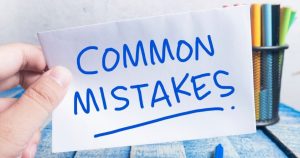Coaching and Mentoring: Resilience in Health Care
5 min read
Job skills are taught in corporate training departments to assist employees in becoming more effective and successful. The ability to be resilient, on the other hand, is a crucial skill for success that is rarely taught in resilience in health care programs.
The ability to bounce back swiftly from adversity or change is called resiliency. For example, when anything goes wrong at work, everyone watches the leader see how they will react. Unfortunately, the business sector expects its leaders to be resilient but does not provide training in how to do so. Instead, learning resiliency becomes a sink-or-swim situation, with most people sinking at first and for far too long.
Resiliency Examples
Who are the individuals and organizations who have perfected the art of resiliency? Here are three examples to consider.
Lance Armstrong (1971 -), the world’s most OK cyclist, a cancer survivor, and seven-time winner of the Tour de France (1999-2005), is the ideal modern illustration of perseverance. Armstrong was reared by his mother, Linda Mooneyham, who instilled a strong sense of independence, which he has often acknowledged as his most significant influence. According to Armstrong, “Pain is only there for a short time. It may endure a minute, an hour, a day, or a year, but it will ultimately fade away and replace something else. If I resign, on the other hand, it will last indefinitely.”
Henry Ford (1863 – 1947), the Henry Ford Motor Company creator, is a more historical example of resiliency. Because the vehicle industry couldn’t keep up with demand, Ford turned to assembly line manufacturing for mass production. “A man who believes he is ‘fixed’ for life poses a subtle risk,” Ford once observed. “It indicated that the next jolt of progress’s wheel might throw him off.”
Starbucks has built a strong business. Even if they work part-time, employees are paid more than the minimum wage and receive benefits. They empower people to make their own choices. Starbucks’ debit card, which allows frequent customers to get their caffeine dose without having to rummage through their wallets, was a game-changer for the quick-service restaurant business.
So, how can businesses and individuals become more resilient? You don’t learn resiliency by attending a workshop, reading a book, or going to a retreat. Being able to be resilient necessitates a more personalized approach. Mentors and their protégés, coaches, and their customers, in our experience, are the most influential purveyors of dispelling the mystery of resiliency.
Coaching vs. Mentoring: What’s the Difference?
So, do you want to establish a resilient business by coaching or mentoring? Unfortunately, human resources experts, who must often determine the most effective technique for the specific and desired change in people they don’t know, bear the brunt of this decision.
Coaches work with people who want to alter their lives, whereas mentors deal with people who want to advance in their careers. A coach is usually hired from outside the company, whereas a mentor is hired from within. A coach is chosen based on compatibility, whereas a mentor is selected based on the skills and information required by the protégé. While a mentor advises and instructs, a coach asks compelling, thought-provoking questions that harness the client’s inner wisdom and creativity. Finally, who is responsible for payment? Coaching is a business or personal expense, whereas mentoring is a business expense.
Coaching Is Examined
Coaching develops leaders who can withstand adversity. It allows small businesses to remain nimble. It fosters a collaborative environment. It emphasizes the importance of humans. It connects personal and organizational objectives. It’s an investment to be shared with those you care about, not a punishment.
Finding the ideal executive coach takes time and effort. It necessitates a dynamic, positive synergy between the coach and the client. That implies human resource professionals must establish relationships with several coaches whom a potential internal client can interview. Unfortunately, assigned coaches have a lower success rate than those chosen.
Constanza is a stunning woman in her thirties who grew up in Argentina’s well-educated and successful household. In the United States, she has a large family. She has a business degree from an Ivy League school and has worked in three high-level corporate roles. Constanza emphasizes excellence, high performance, quickness, and commitment. Her management style is commanding, and her employees report overbearing. In actuality, she is a caring and compassionate individual who seeks out personal connections at work.
Constanza enlisted the services of a coach to help her improve her communication skills with her colleagues and peers and broaden and soften her leadership style. Constanza created goals with her supervisor, sent out a survey to her workers to learn what they thought of her management style, and learned to be more strategic while meeting with her coach regularly. She understood that while her current approach yielded fantastic outcomes, it made her colleagues feel inept. As a result, she structured sessions around asking questions rather than providing answers. She also made modest improvements in her word choice with the guidance of her coach, which improved her ability to delegate successfully. As a result, her colleagues felt trusted and motivated to do their best work.
Constanza’s division’s output is now rated as exceptional by internal and external clients. Her employees said they feel competent and appreciated in their workplace. Constanza is thinking of applying for a position at a higher level. Constanza’s resiliency and leadership have been improved due to her coaching experience, which has helped her organization.
Constanza’s coach has suggested that she become a mentor inside her business to internalize what she has learned properly. Mentoring fully embeds and develops newly learned talents, much as educators realize that learning is validated when a student can teach freshly discovered skills to others.
Mentoring Is Examined
When asked what contributed to their success, most CEOs name people who assisted them along the road. It is possible to succeed without a mentor, but it will take longer. Mentoring reports aid in onboarding new employees, reducing attrition, preparing mid-level managers and executives for successful advancement into senior-level positions, promoting minority workers, and advancing women to the senior level.
Constanza addressed Pravin, a new employee, and the only Asian person in Management, a year after her coaching began to help him acclimatize to the organization’s culture. Constanza recognized how misunderstanding, despite good intentions, might lead to bad leadership as a Latina woman in senior management, and she walked Pravin through her missteps and what she had learned from them. As a result, they continue to meet regularly today.
When a respected, experienced individual expresses a desire to help another person improve and goes out of their way, especially when the other person is open to being influenced, powerful things happen. Mentors can motivate you to overcome obstacles and achieve success. They let you see a broader range of possibilities, provide you helpful guidance to help you grow in your profession, and enhance the fabric of resilience in individuals and organizations.
Mentoring connections provide mentors with just as much, if not more, satisfaction than mentoring relationships provide protégés. Mentors say they receive a new perspective on the business, feel good about giving back, and appreciate assisting someone else with their career management. Learning is at the heart of mentoring. The best part is that both people are happy in the end.





